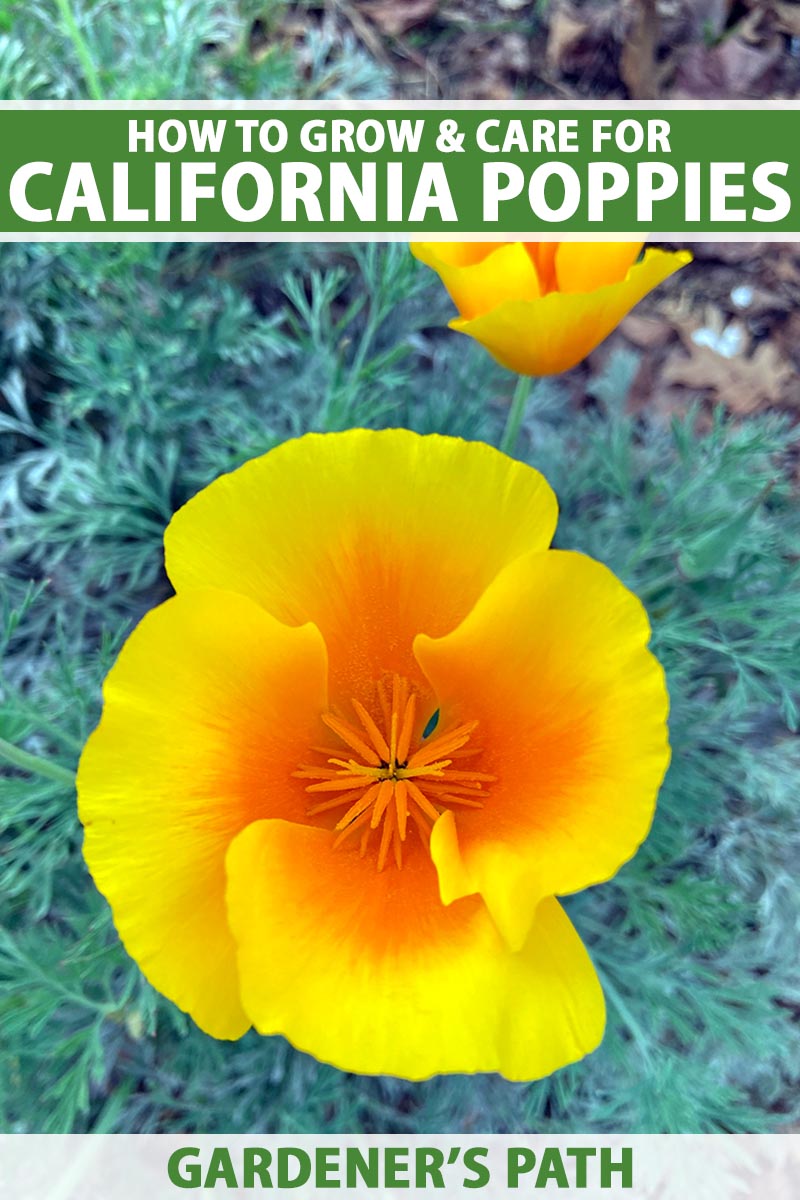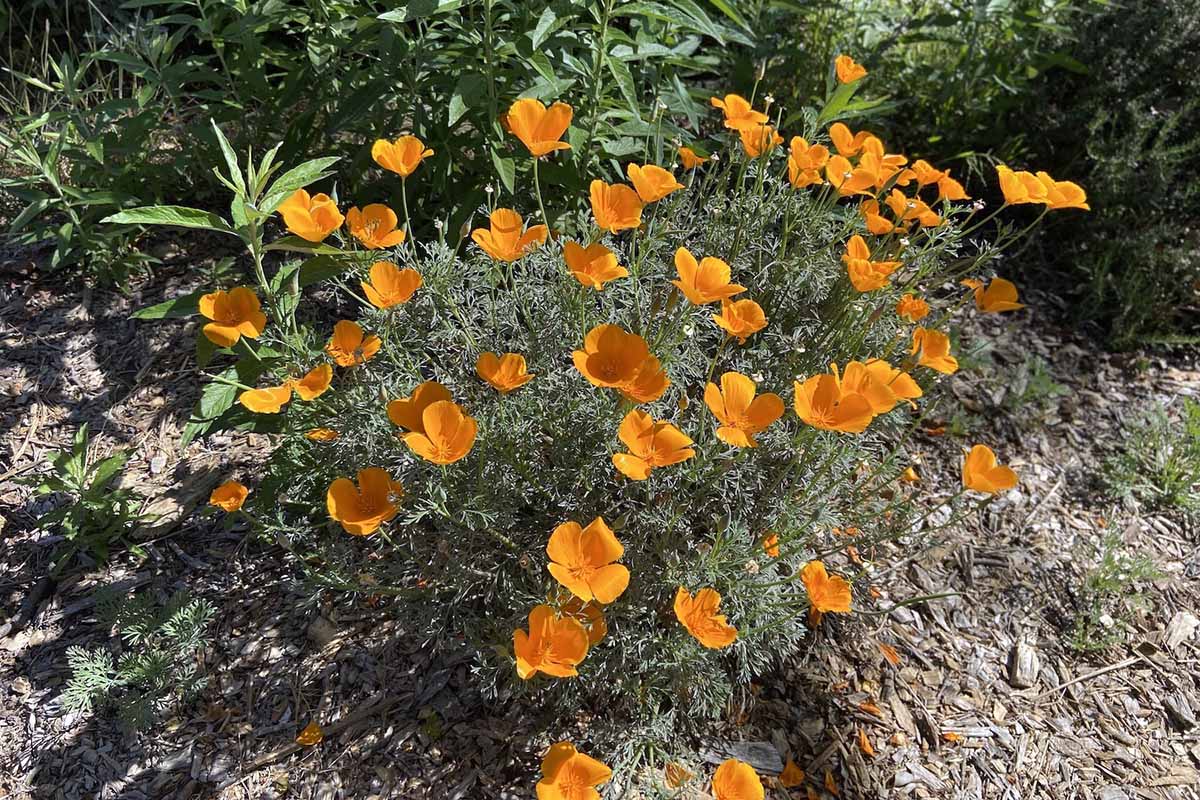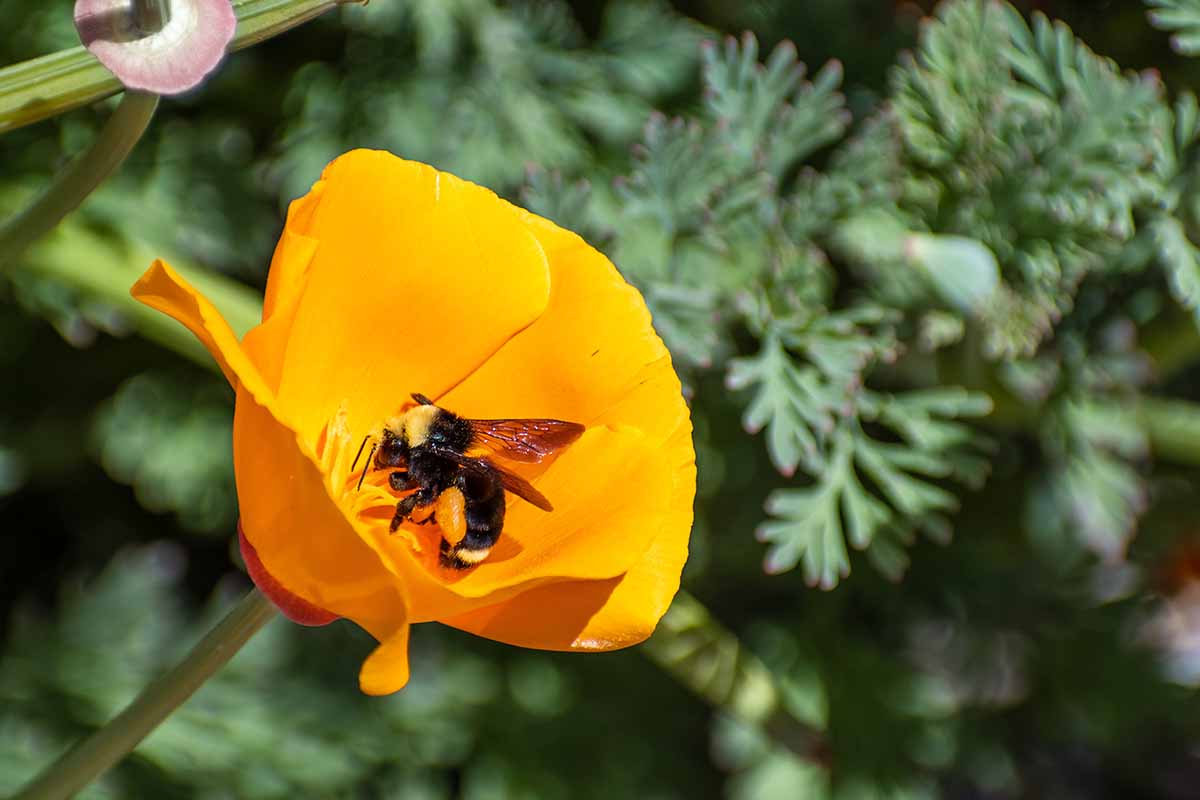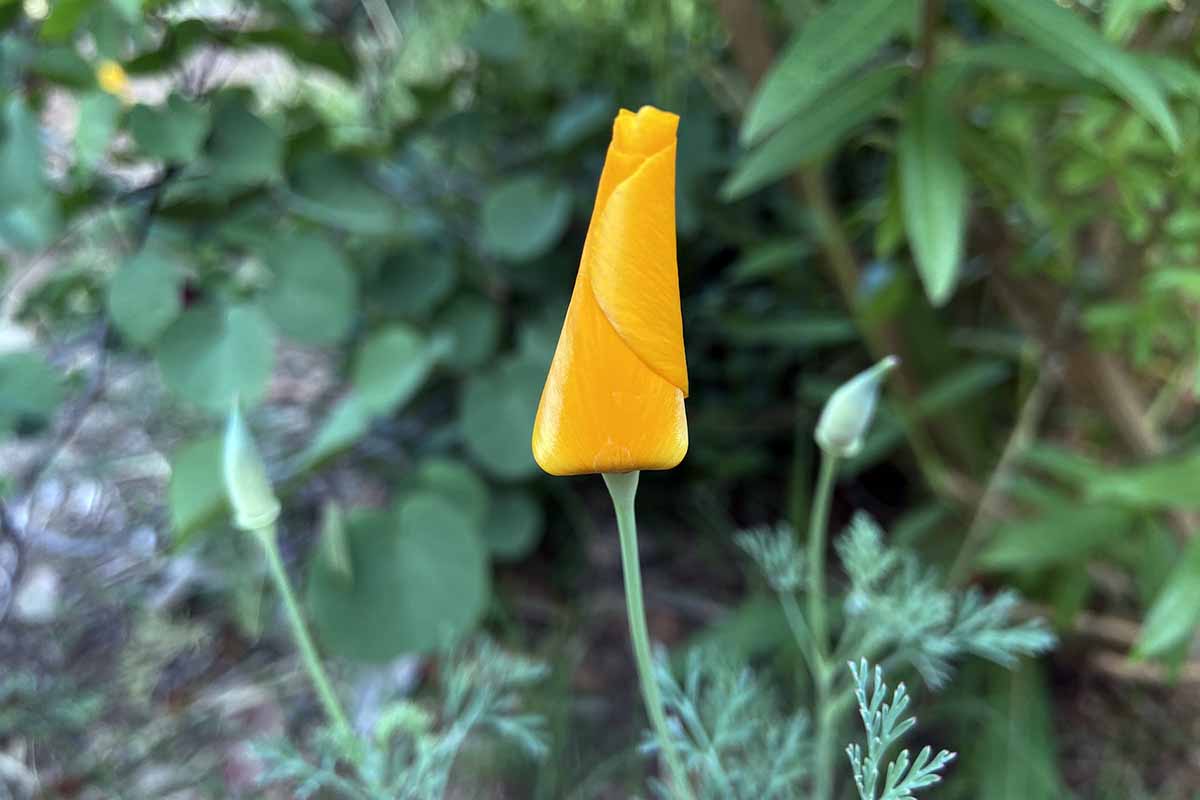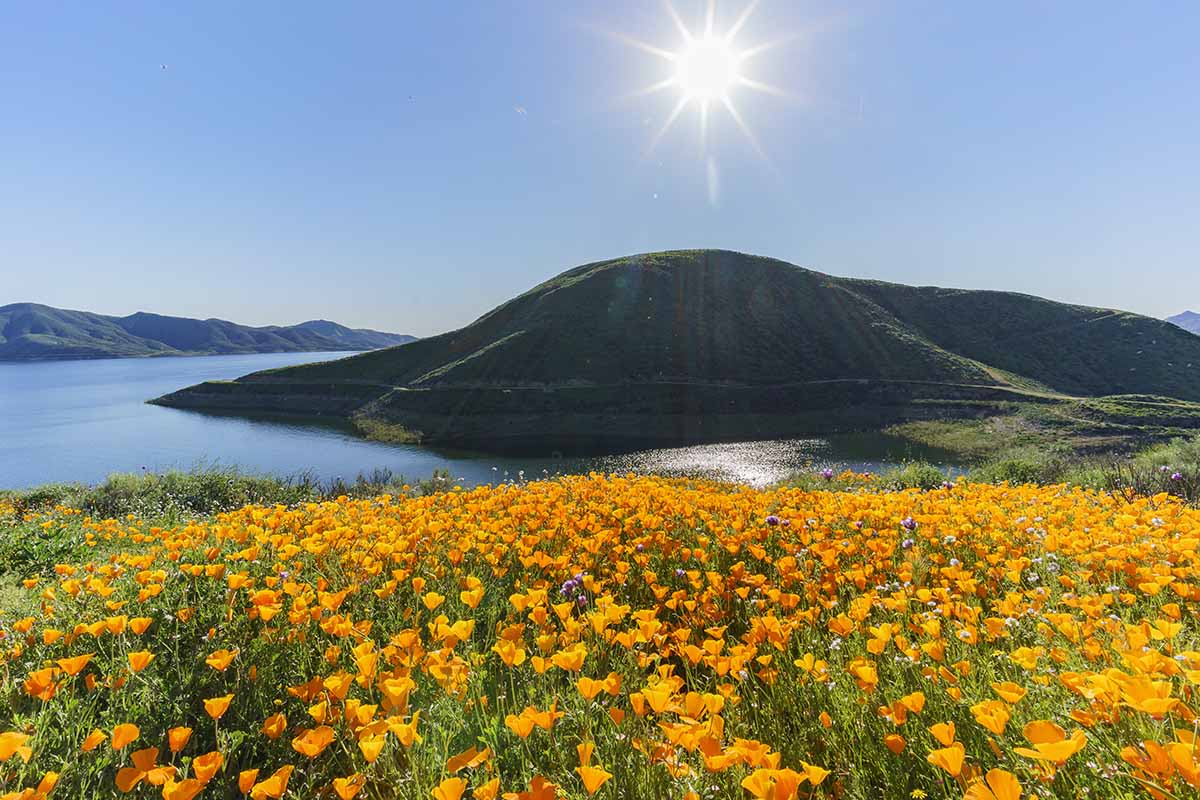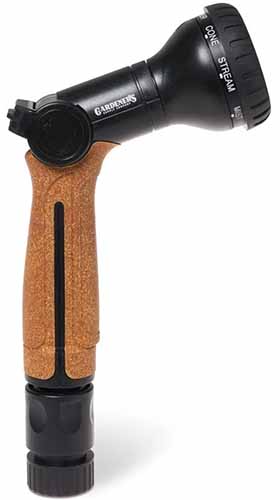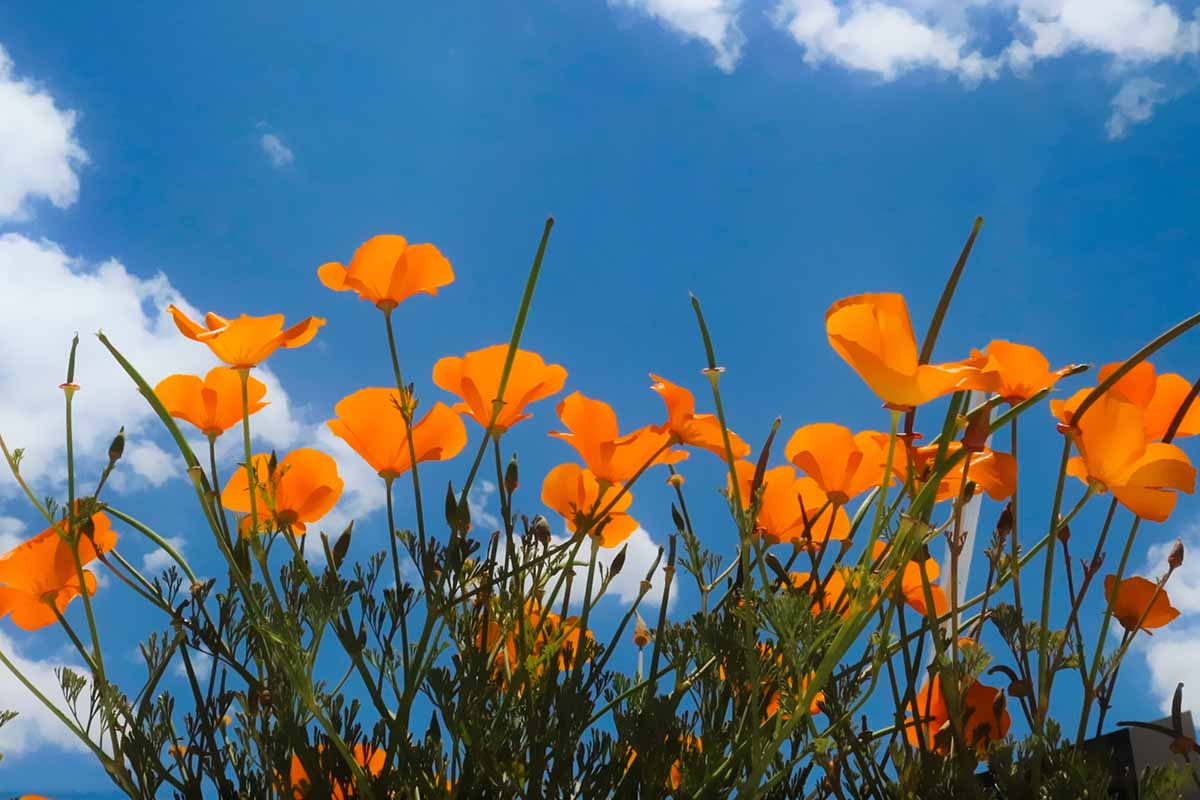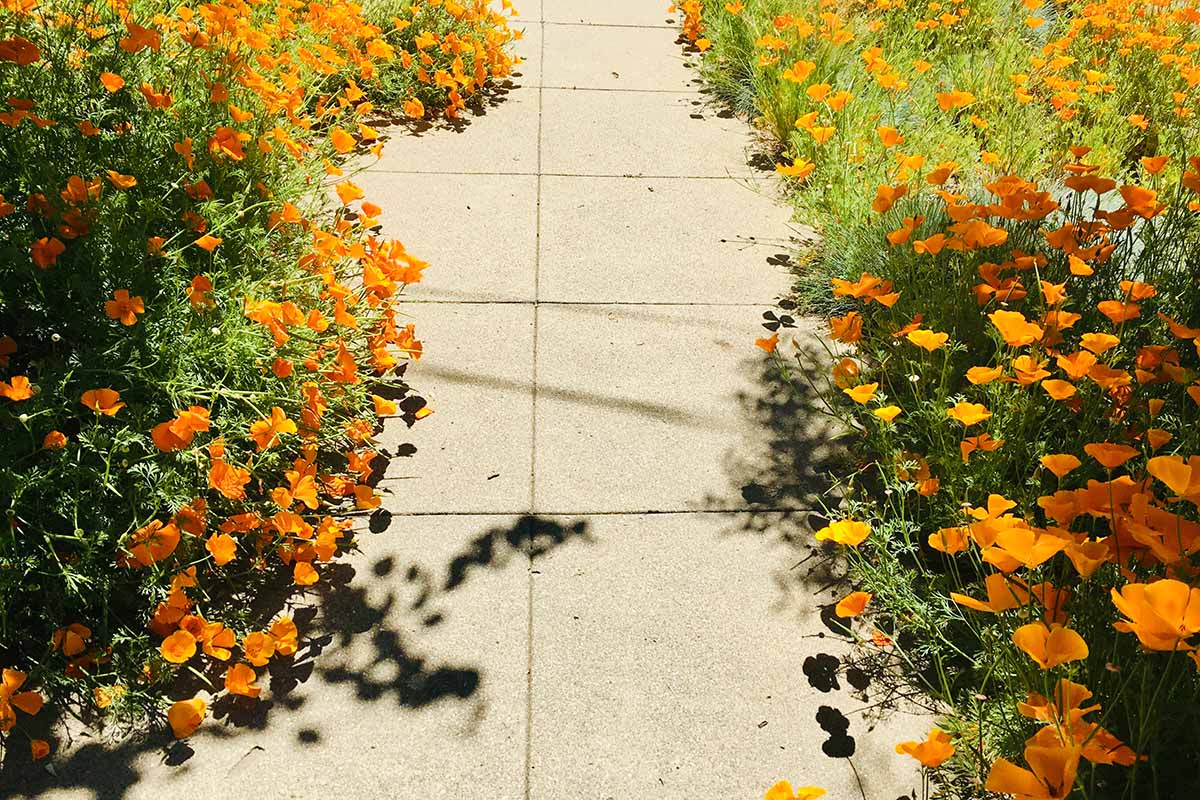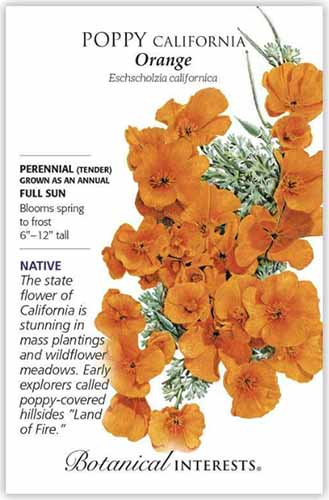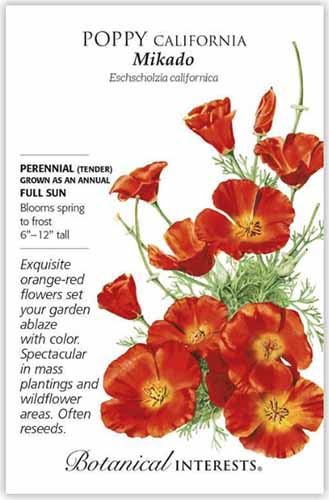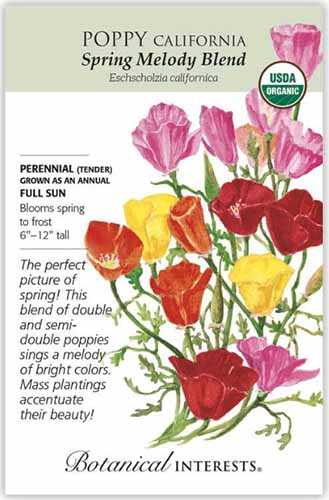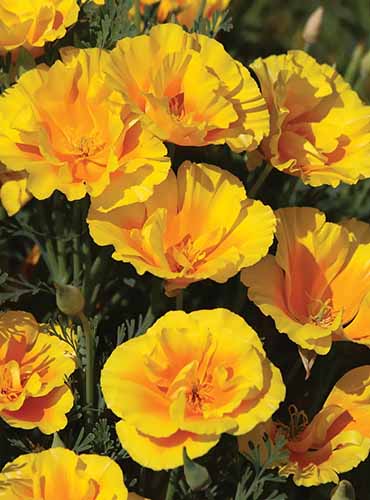Their soft and silky petals reflect the sun’s light, making them shine. They truly are the stars of the native wildflower super-bloom! We link to vendors to help you find relevant products. If you buy from one of our links, we may earn a commission. They are easy to grow, and once you sow them in your garden, they will return every year. Ready to welcome this cheerful wildflower into your landscape? Let’s get growing! Here’s everything we’ll cover:
Cultivation and History
E. californica is native to California, Oregon, southern Washington, Arizona, Nevada, New Mexico, Baja California, and Sonora, Mexico. These flowers can be found in various landscapes like hillsides, valleys, meadows, woodlands, and roadsides. Two subspecies of E. californica are currently recognized: californica and mexicana. E. californica ssp. mexicana is endemic to the Sonoran desert region, while E. californica ssp. californica has a broader distribution and grows in various habitats like the redwood forests, coastal dunes, dry plains, valleys, and desert outskirts. It’s possible to distinguish between the two subspecies if you compare the size of the receptacle rim, which is located below the petals – that of E. californica ssp. californica is slightly larger and darker in color. Additionally, E. californica ssp. californica has yellow-orange flowers and E. californica ssp. mexicana blooms in hues of yellow. California poppies grow in Zones 5 to 10. Depending on the local conditions, they can be considered annuals or short-lived perennials. These plants have the potential to persist as short-lived perennials where there is more consistent moisture, like in coastal environments.California poppies form large low-growing clumps. First, their blue-green foliage will fill the landscape, followed by waves of bright orange-yellow upright flowers on stems that can reach up to two feet tall. They often inhabit empty lots and roadsides since they are not too fussy about their growing conditions. These wildflowers are a significant habitat plant and host to Acmon blue (Icaricia acmon), Mormon metalmark (Apodemia mormo), dotted blue (Euphilotes enoptes), and veined blue butterflies (Icaricia neurona), as well as the buckwheat borer moth (Synanthedon polygoni). Native pollinators like bumblebees, sweat bees, and mining bees also enjoy poppy pollen, and so does the European bee (Apis mellifera). The seeds serve as a source of food for small mammals and birds. Aside from being drought tolerant and preferring areas of disturbed soil, they can also help to control erosion, making them beneficial to sow on steep slopes. This poppy is not only valuable to natural ecosystems but also to people. They made such a strong impression on early California settlers that in 1903, the poppy was designated as the official flower of the Golden State. Long before it became the state flower, the plant was weaved into the everyday culture of California Indigenous communities and used as both food and medicine. The native plant is called mekachaa by the Tongva, qupe by the Chumash, munkai by the Miwok, and herk’werh ’we-chpega’r by the Yurok, just to list a few Indigenous names for you. Indigenous peoples’ traditional healing knowledge of native plants like this poppy has contributed significantly to modern materia medica. The entire plant is gathered to make various healing remedies used either topically or internally, depending on the condition being treated. In Western botanical medicine, E. californica is classified as a nervine, hypnotic, antispasmodic, and anodyne plant. These actions make it an excellent ally for deep sleep support. You can find them growing in many herbalists’ gardens!
Propagation
E. californica has a taproot that does not take to transplanting well and will most likely perish. Propagation by seed is best, they are simple to sow!
From Seed
The best time to propagate California poppy seeds is when temperatures are between 60 and 70°F. Start by selecting a suitable growing space. Keep in mind that they prefer full sun and well-drained soil with low to moderate fertility. They can tolerate partial shade but thrive when given more sunlight. In climates like that of southern California, you can scatter seeds in your desired area and gently rake them in just before or during the rainy season in fall for early winter and spring blooms. They can also be sown in early spring in areas that experience frost for late spring and summer blooms extending into fall.You can broadcast your seeds as suggested or be strategic when sowing them by placing more attention on spacing. However, if you desire a lot of blooms, this approach can be tedious. That’s why scattering them is suggested because you can cover a larger area easily.If you decide not to scatter your seeds, sow them a quarter-inch deep and about two to three inches apart in pre-irrigated soil. Fill your container with moist potting soil and sow seeds a quarter-inch deep, spaced two to three inches apart, and then lightly cover them with soil. When watering, make sure you don’t oversaturate the soil by creating a puddle, which can cause seeds to either rot or become dislodged. Using a hose sprayer like this eight-pattern thumb-control hose nozzle with a cool-looking rubberized cork grip from Gardener’s Supply will ensure you don’t accidentally blast your seeds out of the soil. Thumb-Control Hose Nozzle Poppies can also be grown in containers, but you should plan to leave them in the container you sow them in since they do not transplant well. Select a container with a depth of at least 12 inches that is one foot wide or more, depending on how many poppies you would like to grow. Each plant will need at least one foot of space. You can get a head start on your growing season and place your container in a greenhouse or wait and place them in a warm and sunny location outdoors once temperatures increase to 55°F.Keep the soil evenly moist during germination, which can take two to three weeks. Once seedlings are four inches tall, thin them so they are eight to 10 inches apart. This will help to avoid overcrowding, which can lead to disease.
How to Grow
California poppies thrive in lean soil with a pH range of 5.0 to 8.0, provided it drains well. If your poppies are not receiving water from rainfall, provide them with two deep waterings a month to help their taproots become established, and to extend their growing season when temperatures increase in mid- to late summer. Once established, they will require little to no water and will practically grow themselves! Of course, you can deadhead them to encourage more blooms, but other than that, they benefit from you not fussing with them much.
Growing Tips
Grow in well-drained soil that has poor to moderate fertility.Select a sunny growing location for robust blooms.Space plants 8-10 inches apart.
Maintenance
There is little to no maintenance required with E. californica, making them desirable for wildlife gardens that tend to be designed with low maintenance in mind. Keeping up with proper spacing will prolong their life and extend their bloom time. If they lean over into pathways, you can prune them, and they will continue to produce flowers. To manage unwanted spread, you can harvest seed pods once they turn light brown and when the longitudinal veins on the pods protrude. Each pod contains approximately 60 to 100 seeds! Pinch off the seed pods and place them in a paper bag. They will pop open in the bag within a few days. Remove the empty seed pods and store the seeds in an airtight jar away from light so they will remain viable until you are ready to sow them.
Insects
Native plant species tend to bring in beneficial insects, but there are pests that poppies may deal with from time to time that will need to be managed. This will build your soil’s seed bank with a generous amount of wildflower seeds that will sprout and bloom every year.
Cultivars to Select
Botanical Interests carries orange California poppy seeds and offers them in three different quantities, starting at one gram with about 520 seeds. Orange California Poppy The following cultivar selections offer a range of beautiful petal color options without sacrificing the excellent resiliency of E. californica.
Mikado
‘Mikado’ has vibrant red-orange petals that add bursts of fiery brightness to landscapes, especially in mass plantings. ‘Mikado’ You can find these seeds in one-gram packets available from Botanical Interests.
Spring Melody Blend
Spring Melody Blend California poppies are not your average orange-colored poppy! This mix includes double and semi-double flowers that range in color from pink, red, and white to yellow and orange. Spring Melody Blend You can purchase these seeds in 700-milligram packets from Botanicals Interests.
Yukon Gold
And check out this new poppy variety called ‘Yukon Gold’! The petals are ruffled and have an orange-yellow and gold bicolor that is dazzling. ‘Yukon Gold’ Burpee has this variety available in packets of 250 seeds.
Managing Pests and Disease
California poppies are not significantly affected by pests and disease, although they can be visited by some familiar garden foes. If disease and pests have already struck, particularly if you are growing yours for medicinal use, crop rotation is recommended to avoid further spread.
Aphids
Aphids (Aphidoidea) are small sap-sucking insects that puncture stems while feeding on the plant. They can be found on new growth or on the undersides of leaves. When they suck plant juices, they leave behind a sticky sap called honeydew that attracts ants and can lead to sooty mold growth. An infestation can affect the plant’s growth and can usually be managed with a good hose spraying. If plants get damaged from hosing them down, don’t worry, they will bounce back in no time! Learn more about how to manage aphids in our guide.
Leafhoppers
Leafhoppers (Cicadellidae) can be confused for aphids. Their faster actions like “leaf hopping” will help you distinguish between them. They have red-tipped antennae and vary in shade from green or yellow, to brown and can also be mottled. Their shed skins can be found on the undersides of leaves. Leafhopper feeding damages leaves and can make them appear discolored. Leaves and stems then curl and die. Remove and dispose of affected plant parts.
Thrips
Thrips (Thysanoptera) can sometimes benefit a garden because they feed on mites and other pests, but they also feed on plants with their rasping-sucking mouthparts. Thrips are tiny and slender, and range from yellow to black in color. They have membranous wings that are fringed with long hairs. These pests can be found on the undersides of leaves and will leave behind black dots or frass, which is their fecal excrement. An infestation will result in the discoloration of leaves, and flowers that will fail to open. To control thrips, remove and dispose of infested flowers, then check out our guide for more tips.
Disease
California poppy leaves and stems can be affected by a few types of diseases. Fortunately these can easily be managed when detected in the early stages, before they have a chance to spread.
Downy Mildew
Downy mildew, caused by Peronospora sparsa, a water mold (oomycete), looks like what its name implies. It has a fluffy white appearance and can be seen on the undersides of diseased leaves. It flourishes in very wet and humid conditions. The pathogen is carried through water, and sporulation can occur when humidity is above 90 percent. The spores are short-lived but can easily be spread through the air as well. If any water lingers on plants, the spores will land there, causing infection within eight to 12 hours in ideal conditions. Sprinkler irrigation and overhead watering should be avoided to help prevent downy mildew. If plants become infected, remove them and consider biofungicide treatment if this issue continues.
Gray Mold
Gray mold, caused by Botrytis cinerea fungi, is spread through spores that infect wet plants. Therefore, water early in the day and avoid wetting plants to prevent this disease. The fungi are most active when temperatures are in the mid-70s. Gray-brown spots on leaves and stems are an early indication of infection. Spots will begin to grow fuzzy with mold as the disease advances. Eventually, parts of the plant will become engulfed with the grayish fuzz. Dispose of affected leaves and flowers. As with the other diseases that can infect poppies, applying a biofungicide can limit spread.
Powdery Mildew
Unlike downy mildew, powdery mildew does not require high humidity and can thrive in warm conditions ranging from 60 to 80°F. Caused by Golovinomyces orontii fungi, infected leaves and stems are covered with whitish mycelia, which gives a powdery appearance.
Best Uses
E. californica is a beneficial addition to pollinator gardens, meadows, open woodlands, and slopes. Remove any infected plant parts to avoid spreading spores. See our guide to find more recommendations for dealing with a powdery mildew infection. Powdery mildew, downy mildew, and gray mold can all be controlled with this biofungicide by Arber that is available in 16-ounce bottles from Terrain. Arber Biofungicide Apply with a pressurized hand-held sprayer, hose-end sprayer, or a spray trigger bottle at the first indication of disease and continue applying on a seven-to-10-day schedule until the disease diminishes. Do not allow any of the pesticide to run off into drainage systems or local bodies of water. Their impressive bright blooms and compact growing habit make them perfect for planting in containers and borders. They are also cultivated in medicinal gardens because of the healing constituents they carry that are valued in alternative medicine. They’re treasured by the kids in the neighborhood, who will often exclaim, “the orange ones are my favorite!”. It’s always a joy to hear that the seeds you sowed spark joy. Neighbors will often take their time walking by the poppies, taking pictures. The native pollinators that the flowers attract add to the calming scene that people enjoy. Share your joy of growing California poppies and let us know if you have any questions in the comments section below. If you enjoyed this guide, check out these articles that also highlight growing native wildflowers in your garden:
Birds, Bees, and Beauty: Tips for Growing a Native Wildflower Landscape at Home11 Native Blue Wildflowers for The Garden15 of the Best Native Wildflowers for the US and Canada
